- Home
- Orhan Pamuk
Other Colors Page 13
Other Colors Read online
Page 13
6. Because it reminded me of the person I had been then, I treasured this book as an object. Its badly produced cover was tattered, and from time to time I would fiddle with the ribbon that served as a page marker. I had written notes inside the back cover all those years ago. I kept going back to them.
7. In this way, the pleasure I derived from reading merged with my enjoyment of the book as an object. That’s why I carried it like an amulet that might bring me happiness, even when I was going to places where I would have no time to read. If I was somewhere and feeling bored or upset, I would open the book at random, read a paragraph, and calm down. By now the book’s pages and its cover were giving me as much happiness as the words themselves. The book gave me as much happiness as reading it.
8. When, as I sometimes did of an evening on Heybeliada, the small island where we spent our summers, I sat down on a bench on a road no one else used and began to read the book by the light of the streetlamp, I felt the book to be as much part of the natural world as the moon, the sea, and the clouds, trees, bushes, and stone in the walls. Perhaps because it was set in the distant past, the book seemed as natural and as unmannered as a tree or a bird. It cheered me to be so close to nature, and I felt as if the book was improving my character, cleansing me of all life’s stupidities and evils.
9. During one such happy moment, as I was gazing at the book from a certain distance—gazing actually not at its yellowed pages but the trees and the dark sea beyond it in the distance—I asked myself what meaning this book could have to make me so happy. Realizing that to ask this question was like asking the meaning of life itself, I felt as if this book had brought me closer to understanding that meaning, close enough to be able to say a thing or two on the subject.
10. The meaning of life is intimately linked with happiness, as are all great novels. As in novels, there is in life a genuine wish, an impulse, a race toward happiness. But there is more to it than that. A person wishes to reflect on that desire, that impulse, and a good novel (like The Charterhouse of Parma) is well suited to this purpose. In the end a wondrous novel becomes an integral part of our lives and the world around us, bringing us closer to the meaning of life; it comes in place of the happiness we may never find in living to offer us a joy that derives from its meaning.
11. What makes me happy now is to read a page while keeping all these thoughts somewhere in mind—this despite the fact that I begin to feel as if my happiness threatens to destroy the mystery of the novel.
CHAPTER THIRTY-TWO
Nine Notes on Book Covers
If a novelist can finish a book without dreaming of its cover, he is wise, well-rounded, and a fully formed adult, but he’s also lost the innocence that made him a novelist in the first place.
We cannot recall the books we most love without also recalling their covers.
We would all like to see more readers buying books for their covers and more critics despising books written with those same readers in mind.
Detailed depictions of heroes on book covers insult not just the author’s imagination but also his readers’.
When designers decide that The Red and the Black deserves a red and black jacket, or when they decorate books entitled Blue House or Château with illustrations of blue houses or châteaux, they do not leave us thinking they’ve been faithful to the text but wondering if they’ve even read it.
If, years after reading a book, we catch a glimpse of its cover, we are returned at once to that long-ago day when we curled up in a corner with that book to enter the world hidden inside.
Successful book covers serve as conduits, spiriting us away from the ordinary world in which we live, ushering us into the world of the book.
A bookshop owes its allure not to its books but to the variety of their covers.
Book titles are like people’s names: They help us distinguish a book from the million others it resembles. But book covers are like people’s faces: Either they remind us of a happiness we once knew or they promise a blissful world we have yet to explore. That is why we gaze at book covers as passionately as we do at faces.
CHAPTER THIRTY-THREE
To Read or Not to Read: The Thousand and One Nights
I read my first tales from the Thousand and One Nights when I was seven. I had just finished my first year of primary school, and my brother and I had gone to spend the summer in Geneva, Switzerland, where my parents had moved after my father took a job there. Among the books my aunt had given us on leaving Istanbul, to help us improve our reading over the summer, was a selection of stories from the Thousand and One Nights. It was a beautifully bound volume, printed on high-quality paper, and I remember reading it four or five times over the course of the summer. When it was very hot, I would go to my room for a rest after lunch; stretching out on my bed, I would read the same stories over and over. Our apartment was one street away from the shores of Lake Geneva, and as a light breeze wafted in through the open window and the strains of the beggar’s accordion drifted up from the empty lot behind our house, I would drift off to lose myself in the land of Aladdin’s Lamp and Ali Baba’s Forty Thieves.
What was the name of the country I visited? My first explorations told me it was alien and faraway, more primitive than our world but part of an enchanted realm. You could walk down any street in Istanbul and meet people with the same names as the heroes, and perhaps that made me feel a little closer to them, but I saw nothing of my world in their stories; perhaps life was like this in the most remote villages of Anatolia but not in modern Istanbul. So the first time I read the Thousand and One Nights, I read it as a Western child would, amazed at the marvels of the East. I was not to know that its stories had long ago filtered into our culture from India, Arabia, and Iran; or that Istanbul, the city of my birth, was in many ways a living testament to the traditions from which these magnificent stories arose; or that their conventions—the lies, tricks, and deceptions, the lovers and betrayers, the disguises, twists, and surprises—were deeply woven into my native city’s tangled and mysterious soul. It was only later that I discovered—from other books—that the first stories I read from the Thousand and One Nights had not been culled from the ancient manuscripts that Antoine Galland, the French translator, and the tales’ first anthologizer, claimed to have acquired in Syria. Galland did not take Ali Baba and the Forty Thieves or Aladdin’s Magic Lamp from a book, he heard them from a Christian Arab named Hanna Diyab and only wrote them down much later, when he was putting together his anthology.
This brings us to the real subject: The Thousand and One Nights is a marvel of Eastern literature. But because we live in a culture that has severed its links with its own cultural heritage and forgotten what it owes to India and Iran, surrendering instead to the jolts of Western literature, it came back to us via Europe. Though it was published in many Western languages—sometimes translated by the finest minds of the age and sometimes by the strangest, most deranged, and most pedantic—it is Antoine Galland’s work that was the most celebrated. At the same time, the anthology that Galland began to publish in 1704 is the most influential, most widely read, and most enduring. One could go so far as to say it was the first time this endless chain of tales had appeared as a finite entity, and the edition was itself responsible for the worldwide fame these stories achieved. The anthology exerted a rich and powerful influence on European writing for the better part of a century. The winds of the Thousand and One Nights rustle through the pages of Stendhal, Coleridge, De Quincey, and Poe. But if we read the anthology from cover to cover, we can also see how that influence is bounded. It is preoccupied mostly with what we might call the “mystical East”—the stories are replete with miracles, strange and supernatural occurrences, and scenes of terror—but there is more to the Thousand and One Nights than that.
I could see this more clearly when I returned to the Thousand and One Nights in my twenties. The translation I read then was by Raif Karadağ, who reintroduced the book to the Turkish public in the 1950s. Of
course—like most readers—I didn’t read it from cover to cover, preferring to wander from story to story as my curiosity took me. On second reading, the book troubled and provoked me. Even as I raced from page to page, gripped by suspense, I resented and sometimes truly hated what I was reading. That said, I never felt I was reading out of a sense of duty, as we sometimes do when reading classics; I read with great interest, while hating the fact that I was interested.
Thirty years later, I think I know what it is that was bothering me so much: In most of the stories, men and women are engaged in a perpetual war of deception. I was unnerved by their never-ending round of games, tricks, betrayals, and provocations. In the world of the Thousand and One Nights, no woman can ever be trusted. You can’t believe a thing women say; they do nothing but trick men with their little games and ruses. It begins on the first page, as Sheherazade keeps a loveless man from killing her by entrancing him with stories. If this pattern is repeated through the book, it can only reflect how deeply and fundamentally men feared women in the culture that produced it. This is quite consistent with the fact that the weapon women use most successfully is their sexual charm. In this sense, the Thousand and One Nights is a powerful expression of the most potent fear gripping men of its era: that women might abandon them, cuckold them, and condemn them to solitude. The story that provokes this fear most intensely—and affords the most masochistic pleasure—is the story of the sultan who watches his entire harem cuckold him with their black slaves. It confirms all the worst male fears and prejudices about the female sex, and so it is no accident that popular Turkish novelists of the modern period, and even politically committed “social realists” like Kemal Tahir, chose to milk this tale for all they could. But when I was in my twenties, and awash in typically male fears about never-to-be-trusted women, I found such tales suffocating, excessively “Oriental,” and even somewhat coarse. In those days, the Thousand and One Nights seemed to pander too much to the tastes and preferences of the back streets. The crude, the two-faced, the evil (if they weren’t ugly all along, they dramatized their moral depravity by becoming ugly) were unremittingly repugnant, acting out their worst attributes over and over, just to keep the story going.
It could be that my distaste upon reading the Thousand and One Nights for the second time arose from the puritanical streak that sometimes afflicts Westernizing countries. In those days, young Turks like me who considered themselves modern viewed the classics of Eastern literature as one might a dark and impenetrable forest. Now I think that what we lacked was a key—a way into this literature that preserved the modern outlook but still allowed us to appreciate the arabesques, pleasantries, and random beauties.
It was only when I read the Thousand and One Nights for the third time that I was able to warm to it. But this time I wanted to understand what it was that had so fascinated Western writers through the ages—what had made the book into a classic. I saw it now as a great sea of stories —a sea with no end—and what astounded me was its ambition, its secret internal geometry. As before, I jumped from story to story, abandoning one midway if it started to bore me and moving to another. Though I had decided it wasn’t a story’s content that interested me so much as its shape, its proportions, its passions, in the end it was the stories’ back-street flavor that most appealed to me—those same evil details I had once deplored. Perhaps with time I grew to accept that I had lived long enough to know that life is made of treachery and malice. So on my third reading, I was finally able to appreciate the Thousand and One Nights as a work of art, to enjoy its timeless games of logic, of disguises, of hide-and-seek, and its many tales of imposture. In my novel The Black Book, I drew upon the magnificent story of Harun al Rashid, who goes out in disguise one night to watch his double, the false Harun al Rashid, impersonate him; I changed the story only to give it the feel of one of those black-and-white films of 1940s Istanbul. With the help of commentaries and annotated editions in English, I was able, by the time I was in my mid-thirties, to read the Thousand and One Nights for its secret logic, its inside jokes, its richness, its beauties tame and strange, its ugly interludes, its impudences, and its vulgarities—it was, in short, a treasure chest. My earlier love-hate relationship with the book no longer mattered: The child who could not recognize his world in it was a child who had not yet accepted life as it was, and the same could be said of the angry adolescent who dismissed it as vulgar. For I have slowly come to see that unless we accept the Thousand and One Nights as it is, it will continue to be—like life, when we refuse to accept it as it is—a source of great unhappiness. Readers should approach the book without hope or prejudice and read it as they please, following their own whims, their own logic. Though perhaps I am already going too far—for it would be wrong to send a reader into this book with any preconceived ideas at all.
I would still like to use this book to say something about reading and death. There are two things people always say about the Thousand and One Nights. One is that no one has ever managed to read the book from start to finish. The second is that anyone who does read it from start to finish is sure to die. Certainly an alert reader who has seen how these two warnings fit together will wish to proceed with caution. But there’s no reason for fear. Because we’re all going to die one day, whether we read the Thousand and One Nights or not.
A thousand and one nights …
CHAPTER THIRTY-FOUR
Foreword to Tristram Shandy: Everyone Should Have an Uncle Like This
Prelude
We’d all like an uncle like Tristram Shandy, an uncle who is always telling tales and losing his way inside them, even as he nimbly pulls us in with his jokes, word games, indiscretions, follies, quirks, obsessions, and hilarious affectations; who, despite his cunning, culture, and worldliness, is still a mischievous child at heart. Whenever this uncle has gone on for too long or strayed beyond the limit, our father or our aunt will say, “Enough! You’re frightening the children; you’re making them sick!” Although it’s not just the children who have been hanging on every word and are now addicted to this uncle’s meandering tales, it’s the grown-ups too. Because once we’ve grown accustomed to this uncle’s voice, we want to hear it all the time.
There are many other stages in life when we become attached to a voice, to the words of a storyteller. In crowded offices, in the army, at school, and at reunions, we recognize these special people first from the color of their voices. Sometimes we grow so accustomed to hearing them that when we wish to speak to them it is not because we’re curious to know what they have to say but simply because we long to hear their voices again. We depend on this uncle as we might a busybody neighbor, or the sort of actor who can make an audience laugh the moment he walks onstage, before he’s even opened his mouth. In Turkey, uncles like this remind us, too, of our favorite columnists, who can make stories out of whatever happens to them. In real life, whenever we have accustomed ourselves to this sort of voice—this sort of storyteller—what we most long for is to hear our own thoughts expressed, our own experiences, but in the storyteller’s voice and from his unique point of view. It’s much the same with a relative who lives upstairs and sees you every day, or an army buddy with whom you share all your waking hours: Your need for his voice is so great it is almost as if the world and life itself would not exist without it. We should all have uncles like this.
But you run into an uncle like Laurence Sterne only once in forty years. When I was little, my own uncle amused us, with not literary but mathematical riddles. As reluctant as I was to put myself to an unwelcome test, I still wanted to prove how bright I was, and in this frenzy I would struggle to find an answer. But there was something else going on too: My uncle had a very beautiful wife. When I was five I would often go to visit my aunt, whose beauty could not be dulled by my grandmother’s old furniture, tulle curtains, and dusty ornaments. Forty years on, my aunt still reminds me of my visits. Her sons, both of them, have, God bless them, become dentists, with practices in Nişantaşi. Wh
en I was leaving the older brother’s practice one day, I discovered that the building’s front door was locked from the outside. I stood there watching, savoring the aftertaste of cloves, as a striped cat squeezed through a gap in the grillwork and went into the grocery store across the street. The grocery store into which the cat had gone still sold the best mezes in Nişantaşi, most especially the stuffed dolmas.
Getting off the Subject
What I did in that last paragraph is what is known as getting off the subject. Tristram Shandy weaves together his story with digressions and, because it’s something we all do, we have felt no need to give it a new name in the language we use every day. In the book—The Life and Opinions of Tristram Shandy, Gentleman—we never get around to the life and opinions of Tristram Shandy. Only at the end do we hear of Tristram’s birth, and then he disappears from the scene before anyone takes much notice of him. Sterne’s hero acts as if he could talk forever about the history of the world into which he was born, his father’s views on birth, and life in general. But he never rests on one subject for long. He’s like a happy monkey, swinging from one branch to the next, never stopping, leaping from subject to subject, always moving forward.

 Snow
Snow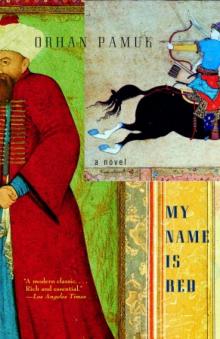 My Name is Red
My Name is Red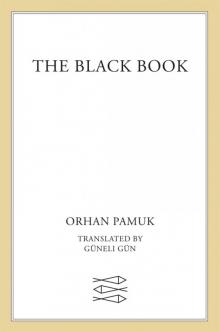 The Black Book
The Black Book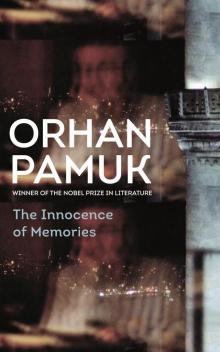 The Innocence of Memories
The Innocence of Memories The White Castle
The White Castle Other Colors
Other Colors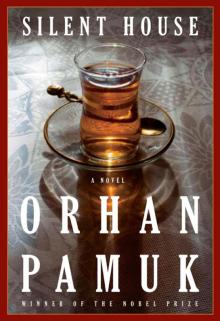 Silent House
Silent House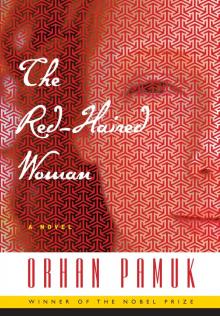 The Red-Haired Woman
The Red-Haired Woman The Museum of Innocence
The Museum of Innocence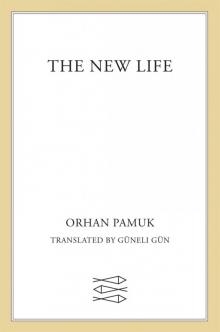 The New Life
The New Life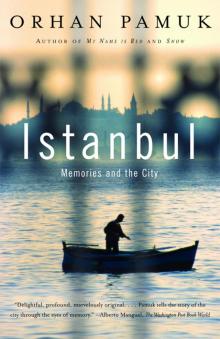 Istanbul
Istanbul